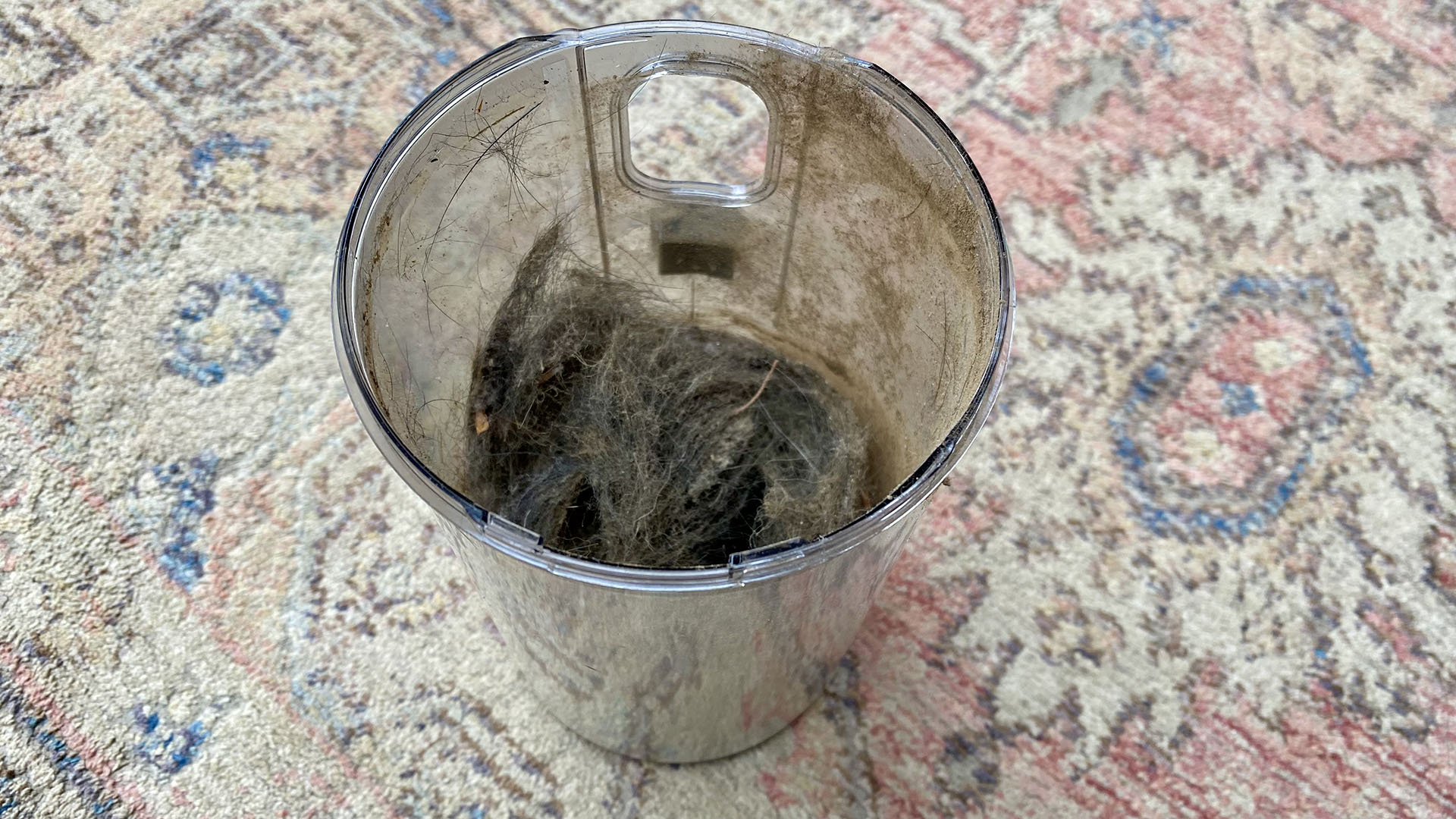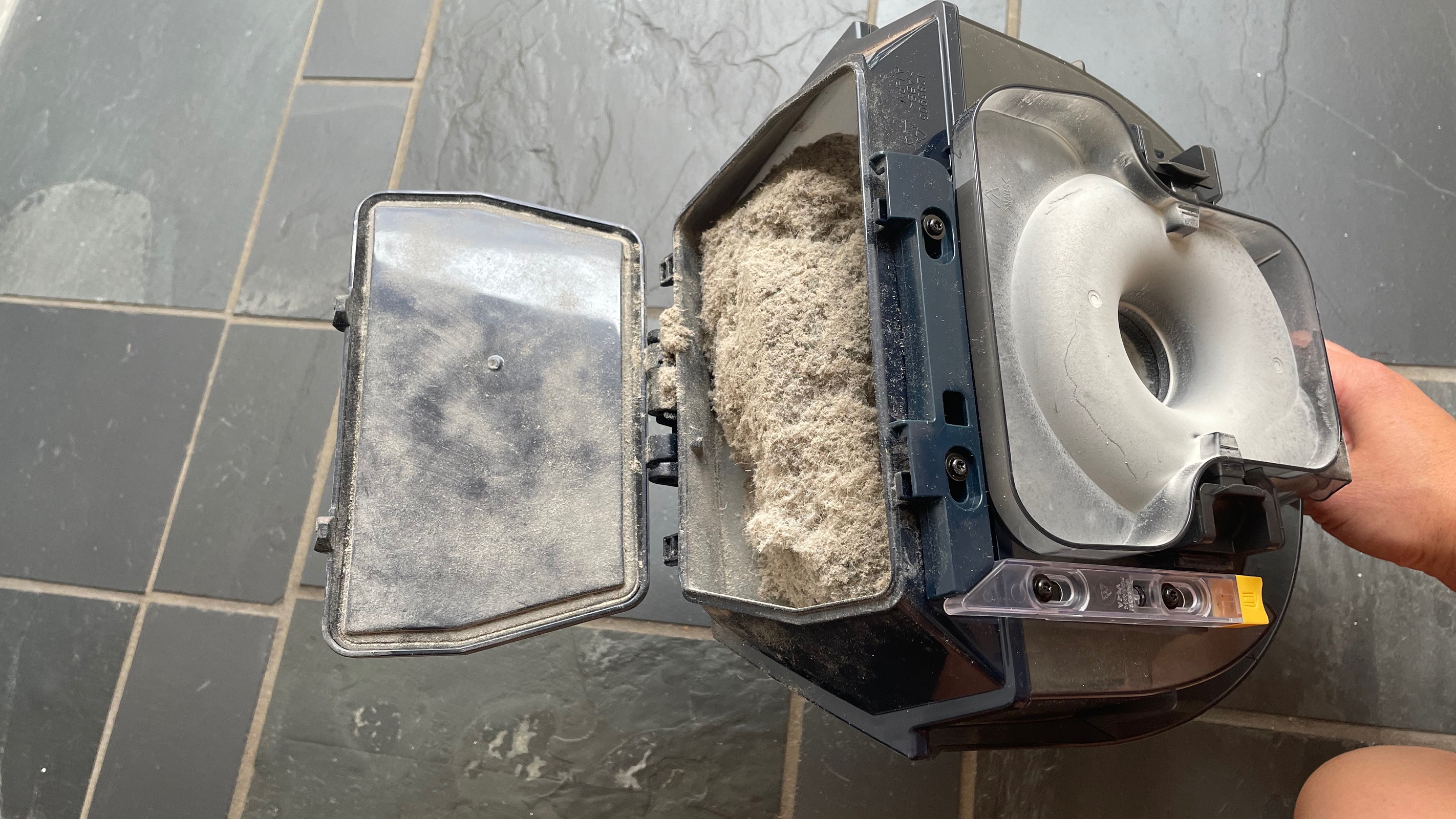What are the disadvantages of a bagless vacuum cleaner?

One of the most tiresome aspects of using even the best vacuum cleaner is having to empty the bag. For a start, detaching it and reattaching it is usually quite fiddly and frustrating, even more so if you get yourself dirty doing so. If you attach it incorrectly, your vacuum won't work as well as it should. And then there's the cost and hassle of buying more bags, which seem to be as varied as printer toner cartridges, so it's easy to buy the wrong ones.
For these reasons and more, bagless vacuum cleaners have become increasingly popular in recent years. These models use a reusable dust cup or canister to collect dirt and debris, rather than bags. This makes them much more convenient when it comes to emptying your machine, and arguably makes them more environmentally friendly too.
So why aren't all vacuum cleaners designed in this way? It's good question that points to the fact that despite their many advantages, bagless vacuum cleaners also have some very real disadvantages that we'll outline below. Meanwhile, if you're seeking ways to make your vacuuming routine faster and more painless, also check out our guide to the best cordless vacuum cleaners and, for the ultimate in convenience, our roundup of the best robot vacuums.
1. They don't hold as much dirt
One of the main issues with bagless vacuum cleaners is that their built-in containers hold a smaller volume of dirt and debris than the average bag found in traditional vacuums. This means that while they're easier to empty, you will need to empty them more often, reducing the amount of time and effort you might be expecting to save.

This is less of a problem if you only have a small space that doesn't need vacuuming particularly frequently. On the flipside, however, if you have a large home with pets that shed heavily or kids you make a lot of mess, you'll be emptying your vacuum so many times that you may wish you'd gone for a bagged model.
2. You may breathe in more dust
It's pretty tricky to empty the container of a bagless vacuum without releasing a cloud of tiny dust particles other debris. Typically you're going to breathe in some of this, which is irritating at best, and potentially damaging to your health if you suffer from respiratory issues such as asthma or hay fever. If you're prone to allergic reactions, it could even be life-threatening. Also bear in mind that in multi-room or multi-level homes, bagless vacuums can potentially spread allergens, dust or debris from one area to another, increasing the risks of cross-contamination.
3. The filters aren't as good
These days, the best traditional vacuum cleaners often incorporate additional filters, such as HEPA (High-Efficiency Particulate Air) filters, which are designed to capture even the smallest particles, including allergens and microscopic dust.
Sign up for breaking news, reviews, opinion, top tech deals, and more.

Bagless vacuums typically don't offer this, which is another reason they'll potentially release more fine particles back into the air.
4. The filters need more cleaning
Keeping up with regular filter maintenance is crucial to prevent clogs that reduce suction power over time, and ultimately rendering the vacuum useless at picking up dirt and debris effectively. Unfortunately, the filters in bagless vacuum cleaners generally need more frequent cleaning or replacement compared with traditional models, adding to the workload and cost connected with this type of vacuum cleaner.
5. They can smell a bit
Over time, the dust and debris collected in a bagless vacuum cleaner will often start to smell bad. That's especially the case if you suck up things such pet or human hair, food particles or other organic materials, all of which can produce foul smells when they decompose. In comparison, the bag in traditional vacuums provides an extra layer of protection, making it less likely that these bad smells will invade your nostrils.
6. They're costly to maintain
As we mentioned in our introduction, bagless vacuum cleaners save you money because you don't need to buy bags. But there are long-term maintenance and replacement costs to these types of vacuum as well.

As mentioned above, the filters in bagless vacuums need to be replaced more often. The dust cups or canisters themselves may eventually need to be replaced due to wear and tear or damage. And some bagless vacuum cleaners require specialized filters or components that can be more expensive than standard replacement bags.
7. They're less good at dealing with certain substances
There are particular substances that cause problems with bagless vacuum cleaners, including fine powders, ashes and liquids. That's because they become compacted (caked) inside the dust containing, making them difficult to remove and potentially damaging your device. If they're sucked into a vacuum bag, though, then there's less of a problem.
Should you buy a bagless vacuum cleaner?
In short, while bagless vacuum cleaners offer convenience and a more environmentally friendly option, they also come with some significant downsides. The most important of these are their limited capacity and reduced suction power, which means that if you have a large home and/or do a lot of cleaning, they're not always the best option.
They also tend to spread more particles into the environment when you empty them, which means that if you suffer from allergies and respiratory issues, you should probably avoid this type of model.
On the other hand, for those with smaller homes who don't clean as often, bagless vacuum cleaners do offer convenience and a more eco-friendly approach. And so if you're willing to change the filters more often, and empty the container more often, a bagless vacuum cleaner can be good choice.

Tom May is a freelance writer and editor specialising in tech, design and sleep products. Over the years he's tested a number of mattresses, duvets and pillows, and as a back pain sufferer, has a keen interest in finding ones that offer maximum support. Plus, in running a successful Airbnb business, sleep hygiene and providing the right bedding for guests has become a big part of his day-to-day life. He is author of Great TED Talks: Creativity, published by Pavilion Books.